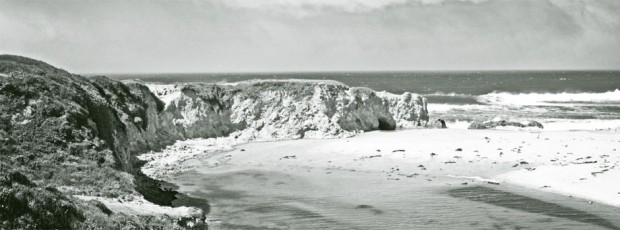
Coastal visitors on a recent October day may have been startled to see a giant excavator on Pescadero State Beach digging a ditch in the sand from the Pescadero lagoon to the ocean. What was going on here?
Formed by the confluence of Pescadero and Butano Creeks, Pescadero lagoon and marsh comprise the largest, most complex, seasonally closed lagoon system between San Francisco Bay and Elkhorn Slough (in Monterey County). Coastal estuaries such as Pescadero are among the most biologically productive habitats in the world. Pescadero’s complex ecosystems provide habitat for some of California’s rarest wildlife, including a number of threatened and endangered species, some of which have conflicting habitat requirements. The Pescadero lagoon is also notable for being the only lagoon on the Central Coast where fish kills – including federally threatened steelhead trout – have been regularly observed at the time of the breach of its natural sandbar.
The very nature of the marsh and lagoon at Pescadero is to evolve and respond to change. A dynamic environment of water, wind, drifting sands and debris brings constant change to the marsh. Natural flooding and seasonal cycles cause variations in water level, salinity, and water quality.
Beginning in the early 1920s, farmers diked off adjacent agricultural fields by building levees along Butano Creek, impeding the natural flooding process. These levees had the unintended consequence of increasing the frequency of flooding. Over the decades, Butano Creek has filled with silt generated by historic bad logging practices, old farm and logging roads, stream bank failures, and ongoing agricul-


Leave a Reply